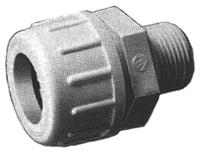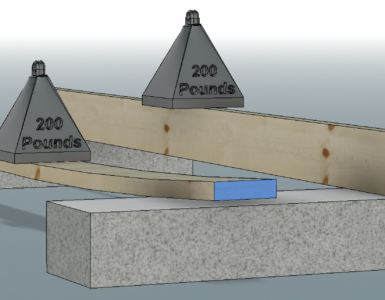Aquarium Heater Background
The aquarium heater is the most overlooked, yet critical piece of equipment in the home aquarium. A reef tank can go for days without lights or pumps and a fish only tank can last for weeks, but either can be wiped out in a matter of hours due to a malfunctioning heater. Aquarists will spend hundreds, if not thousands of dollars on equipment, only to purchase (and rely on) $25 aquarium heaters that are pure junk.
One of the most common questions posted on aquarium related websites is “what is the best heater?”. There is no shortage of opinion in the responses. For each favorable response about a brand or model, there is a negative response or dire warning for that model same model. The conversations quickly devolve into hostile confrontations between those who feel strongly about their purchases and opinions and are unwilling to see the truth. This article is intended bypass the myth and opinion regarding hobby heaters. Armed with what you learn here (the facts), you will be able to answer any heater question thrown at you as well as make informed decisions about your own setup or future purchases.
Aquarium Heaters: Under the Hood
Aquarium heaters come in two basic flavors, those with electronic thermostats and those with mechanical thermostats. Most heaters are of the mechanical variety but some newer models are electronic. Both styles have the same basic parts with the exception of what regulates the temperature and/or energizes the heating element. Shown below are basic diagrams (taken from the Google patents website) of both styles of heaters.

Both types of heaters share common parts such as the envelope, heating element and temperature adjustment knob. The envelope may be made of glass or titanium, its purpose is to keep the internal components of the heater dry. The heating element is simply a piece of resistance wire that is energized with 120V from the mains supply that the heater is plugged into. The heating element is either ON or OFF (it does not vary in temperature) and is controlled by the thermostat (shown in red above). This is where the similarities end.
Theory of Aquarium Heater Operation
The mechanical style heater has what is called a bi-metal thermostat. It is comprised of two dissimilar metals bonded together. These metals expand and contract at a different rate when heated or cooled causing the bi-metal strip to curve as the temperature changes. There is an electrical contact at one end of the bi-metal strip. As the bimetal strip bends it moves the contact towards (or away) from another contact. The adjustment knob either varies the distance between the contacts or varies the tension on the bi-metal strip via a spring. This adjustment distance (or pressure) is what allows the heater to be set for a specific temperature by forcing the bi-metal strip to move further (or with more force) to create an electrical connection between the contacts.
The electronic style heater has an electrical temperature sensor inside. As the aquarium temperature rises and falls, the output voltage of the sensor varies. This low voltage signal is used to control an electronic (solid state) switch that has no moving parts. This electronic switch (known as a Solid State Relay or SSR) turns the heating element ON and OFF according to the setting on the control dial.
Aquarium Heater Reliability
The mechanical style thermostats suffer from several problems that are an inevitable reality of their design. The bi-metal thermostats are very small and delicate. The constant bending causes rapid metal fatigue and therefore the bi-metal strip is rather prone to breaking. The electrical arcing across the contacts also takes its toll and it is not uncommon for the contacts to weld themselves together. The truth is that mechanical aquarium thermostats fail with alarming regularly. The failure usually leaves the thermostat in the ON position causing a rapid overheating of the display tank.
The electronic style thermostats also have many problems. Put simply, the circuit design in most models leaves a lot to be desired. These simplistic circuit topologies are designed to be cheap to manufacture with a low component count (to keep costs down). They circuits have a fairly high failure rate and commonly fail in such a way that the heating element remains energized.
Other Aquarium Heater Problems
Even though many heaters are sold as fully submersible, constant immersion is not a good idea. It is very common for the watertight seals to leak and allow the internal components to become wet or flooded. This can be deadly for you or your livestock. It is best practice to situate your heaters so that the heads are not submerged, no matter what the manufacturer says. I will have more to say about this in the best practices section.
Running a heater out of the water or with the heating element not fully below the waterline is also a common cause of heater failure. The heating element directly heats the envelope which in turn heats the water. The water quickly pulls the heat away from the envelope. Dangerous temperatures can develop very quickly if the heating element is not fully below the waterline. Overheating can rapidly damage the seals, electronics, thermostat, element and the envelope. Once a heater is run “dry” it should be thrown away (even if to looks fine)!
Divide and Conquer
The bottom line is simple! Aquarium heaters (of all makes and models) fail at an alarming rate. The failure modes are inherint to the design of the components and not something we can fix. We can, however, use some basic logic to create a reasonably fail-safe system out of components that are not fail-safe when used alone.
Ignoring the real world math, we can make some basic assumptions. Lets assume that a 1000W heater has stuck in the ON mode and it raises the water temperatre 2 degrees every hour. We can the assume that a stuck 500W heater would only raise that same tank’s temperature 1 degree every hour. We can further assume that a stuck 250W heater would only raise that tanks temperature .5 degrees an hour!
From the above logic, it should be fairly obvious that using several small heaters is much safer than using fewer large heaters. By separating the heating duties between several units, no single unit has the ability to rapidly overheat the tank in the event of a malfunction. Furthermore, heaters that fail in the off position will be backed up by the other heaters in the system! The use of multiple small heaters creates a fault tolerant heating system.
Dedicated Temperature Controllers
The use of multiple small heaters adds a layer of redundancy and safety to the aquarium’s life support system, however, there is more that can (and should) be done to prevent catastrophic failure. Fault tolerance (as described above) can be further enhanced by the addition of a fail-safe system.
A dedicated temperature controller can (should) be used to regulate the aquarium’s temperature. Industrial/commercial units such as the Ranco ETC series are magnitudes more reliable than the thermostats that are built into the hobby heaters. The controllers are designed to operate reliably in demanding industrial environments and have a very low failure rate. Many hobby heaters come with controllers that mimic the look and functionality of the commercial units, but make no mistake, they are nowhere near as reliable. The hobby controllers are actually not much better than the thermostats built into the heaters.
The best way to utilize a controller is to set the thermostats on the individual heaters a few degrees above the controller’s set point. The controller will turn the heater ON and OFF as demand requires. The heaters’ internal thermostats will prevent the heaters from continuing to run in the rare event that the dedicated temperature controller malfunctions (sticks in the ON position). This is the fail-safe! The internal thermostats will not be prone to metal fatigue or arc damage because they are not used during normal operation.
Dedicated aquarium controllers such as the Digital Aquatics Reefkeeper, MCU Research Lighthouse, Neptune Systems AquaController, Elos Biotopus, etc. have all proved to be somewhat reliable, but there are sporadic reports of various failures of these systems. The bottom line here is also very simple! These are NOT dedicated temperature controllers, and instead, operate with many different inputs and user programmable options. These units can be attached to various combinations of inputs and outputs and at the same time have their logic programmed by end users. The reality is that these units are not nearly as reliable compared to a dedicated temperature controller such as the Ranco ETC series. Leave the life support to tried and tested, dedicated units and let the aquarium controller handle the data logging and lighting.
Aquarium Heater Placement
Heater placement is a very important consideration in the design of an aquarium system, especially when using a dedicated temperature controller. The heater should always be slightly downstream of the temperature probe (unless the system, is sump-less). Both the heater and the temperature probe need to be placed so that they will always be submerged (only the heater envelope), even with the pumps are off. This means that they should be attached to the back wall of the display tank or in the input compartment of the sump. The overflow box is only an option of it stays full of water when the pumps are not running. The return compartment of most sumps is not typically a good area to place a heater. The water level in the return compartment can drop substantially due to evaporation and expose the heater envelope to the air. Placing the temperature probe and heater in different areas if the system is usually a recipe for trouble. With the components separated it is possible that a pump failure could allow the heater to function erratically and overheat part of the system.
A safe and unobtrusive way to attach the heaters is through the sidewall of the sump. This can be done with a standard bulkhead combined with a PVC compression fitting. There are several manufacturers of the compression fittings. One such company is Flo-Control (NDS) out of Burbank, California. Here is the catalog page at the manufacturer’s website. You also buy the “kits” with a bulkhead and compression fitting at jehmco.com. They are listed as “heater adaptor for sumps”. Installing the heater through the sump wall ensures that the heater will always stay submerged and ensures that water can never get inside.

(click to enlarge)
A second option is to use a heater-well such as those manufactured by Pentair Aquatics. The heater-well also keeps the top of the heater from ever getting wet. They can be plumbed in-line with the return pump or overflow system. Care should be taken when using this type of system. The heater will need to have a fail-safe switch that turns it off in the event that the return pump is off, otherwise, the heater may be allowed to run dry.
I prefer the bulkhead method because it takes up much less room. The only drawback is that the sump compartment has to be drained to replace a faulty heater. If space is not at a premium then heater-wells are a viable and smart option.
Aquarium Heater Sizing
A properly sized heating system will have enough capacity to maintain the system target temperature on the coldest days of the year. Oversizing the system increases risk by shortening the time period that it takes a stuck heater to push the tank to a critical temperature. Even if best practices are followed and the heater setup is fault tolerant (multiple heaters) and fail-safe (dedicated controller in conjunction with the on-board thermostats) it is wise to size the heaters properly.
A baisc guideline is to have three to five watts per gallon for every 10° Fahrenheit above room temperature that you wish to have keep the tank temperature.
((Desired Tank Temp − Room Temp) ÷ 10) × System Gallons × 3 = Watts Desired
Example:
100 Gallon System
78° Target temp
67° Room temp
Using both the low and high values:
(78 − 67) ÷ 10) × 100 × 3 = 330 Watts
(78 − 67) ÷ 10) × 100 × 5 = 550 Watts
A good place to start would be to use (4) 100W or (3) 150W heaters.
Lets look at a simple fault scenario with this example system. We will assume that there is no temperature controller and (1) of the 150W heaters sticks on the ON position. The 150W heater puts 511 Btu/hour. It takes 833 BTUs to raise the 100 gallons of water 1° Fahrenheit. The tank will rise .6° Fahrenheit every hour that the 150W heater is stuck on. Contrast that with the single 500W heater that would raise the tank temperature 2° Fahrenheit every hour that it is stuck on! For more details of the math and how these numbers were derived, please see my article “Thermodynamics for the Reef Aquarist”.
Conclusion
The heater is an important part of your system. Heater failures are very common and can cause significant damage to your system. Even a modest aquarium represents a significant investment in both terms of money and time. Relying on a $25 thermostatic heater to protect that investment is illogical. Some brands of heaters fail more than others, but it is very easy to implement an inexpensive plan that will greatly reduce, if not nearly eliminate that chances of a heater causing the loss of livestock.
- Use several small heaters instead of one large heater
- Connect the heaters to a Ranco, Johnson Controls or similar controller
- Don’t place the heater in an area where it can run dry
- Don’t fully submerge the heater
- Size the heaters to match the system, bigger is NOT better!
- Don’t be fooled by sales pitches, all of the heaters are petty much the same
-BeanAnimal






Add comment